Introduction:
Doklam, called Donglang by China, is an area in the Chumbi Valley with a high plateau and a valley, lying between China's Yadong County to the north, Bhutan's Haa District to the east and the Indian state of Sikkim to the west. Since the 1960s, China and Bhutan have disputed sovereignty over the Doklam area.
Tucked away in the eastern Himalayas, Doklam (also spelled Dokhlam) is a remote plateau that shot into international headlines during the 2017 India–China standoff. Though largely unknown to the wider public before the incident, Doklam’s unique geography, ecological richness, and strategic importance make it a focal point of regional geopolitics.
Now, from October 1, 2025, the Government of Sikkim will open Doklam (Doka-La) and Cho-La to domestic tourists under its battlefield tourism initiative, allowing travelers to explore this sensitive region in a structured and sustainable way..
The 2017 India–China Standoff
In June 2017, a tense military standoff unfolded at Doklam between Indian and Chinese forces, triggered by China’s attempt to extend a road in the disputed plateau. India, citing its security concerns and its treaty obligations with Bhutan, intervened to stop the construction. The confrontation, which lasted 73 days, brought the two Asian giants face-to-face and raised fears of escalation. The standoff eventually de-escalated in late August 2017, but it highlighted the plateau’s strategic significance for all three stakeholders: India, China, and Bhutan.
For India, Doklam lies close to the vulnerable Siliguri Corridor, also known as the “Chicken’s Neck,” a narrow stretch that connects mainland India with its northeastern states. Any compromise in this region could have severe security implications.
Geopolitical Importance
Doklam’s significance lies in its location. For India, it safeguards the Siliguri Corridor. For China, it offers potential access southward into vulnerable areas. For Bhutan, it represents sovereignty and territorial integrity. The 2017 standoff underscored that Doklam is more than a plateau—it is a critical pivot in the regional power balance of South Asia.
Where is Doklam located?
Doklam is located at the tri-junction of India (Sikkim), Bhutan, and Tibet (China). The plateau lies just east of the Nathula and Jelep La passes in Sikkim. While the area itself belongs to Bhutan, it borders China’s Chumbi Valley and is less than 50 km from India’s strategic Siliguri Corridor. Its elevation is around 4,000 meters above sea level, making it a high-altitude, rugged landscape with challenging weather conditions.
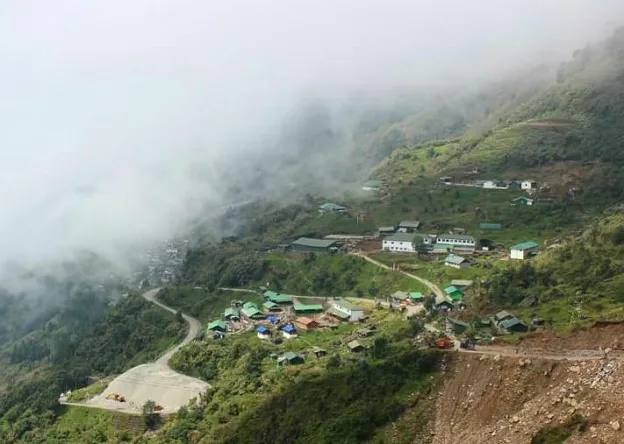
Official Notification: Rules for Visiting Doklam (2025)
On September 23, 2025, the Government of Sikkim issued Notification No. 87/Home/2025, outlining the guidelines for tourist access to Doka-La (Doklam) and Cho-La. Key details:
Access & Entry:
Permits: Mandatory, issued by the Tourism & Civil Aviation Department through registered tour operators.
Eligibility: Indian citizens only (valid Voter ID required).
Permit Fee for Doklam visit: ₹1120 per person (includes Wildlife Sanctuary entry & Tsomgo Pokhari Sangrakshan Samiti fee).
Booking Requirement: One-night stay booking confirmation (Kupup, Gnathang, Zuluk, Padamchen) required.
Vehicle Restrictions:
- Max 25 tourist vehicles + 25 bikers per day allowed.
- Vehicles must have engine capacity 1400cc or above.
- Only registered travel operators’ vehicles permitted (no private vehicles).
Fixed tariffs:
Category Z vehicle: ₹12,000 for 2-day package.
Category J vehicle: ₹11,000 for 2-day package.
Security & Escort:
- Tourist vehicles will be checked at Kupup Checkpost.
- Army and police will ensure vehicles comply with route/limits.
- Police escort mandatory from Kupup to Doka-La and Cho-La.
Staggered Timings:
Due to unpredictable weather, tourists must start early.
Two daily departure slots:
To Cho-La from Tsomgo: 10:00 am & 11:00 am.
To Doka-La from Kupup: 9:00 am & 10:00 am.
Environmental Protection:
No littering allowed; all vehicles must carry a garbage bag, to be disposed at Tsomgo/Kupup collection sites.
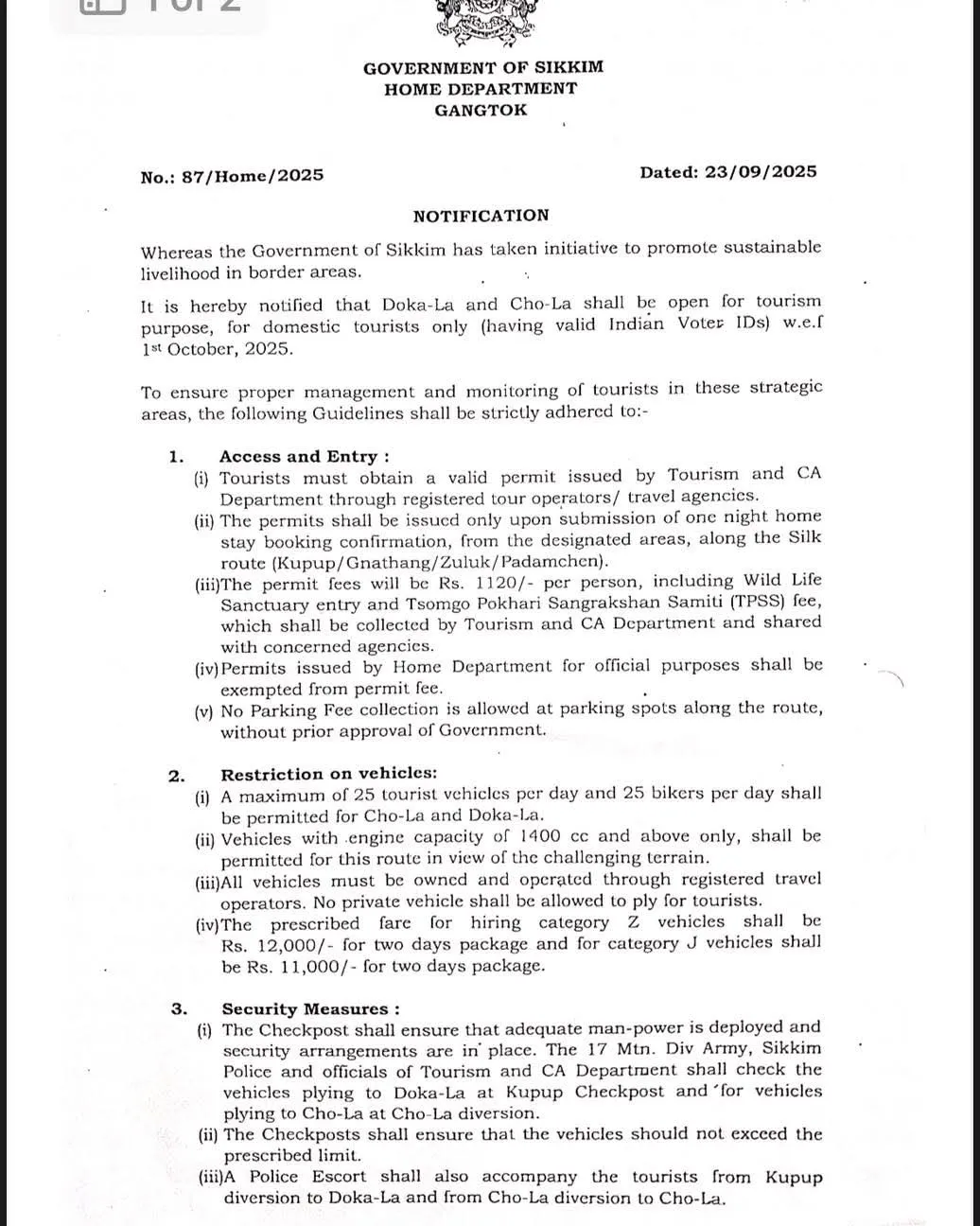
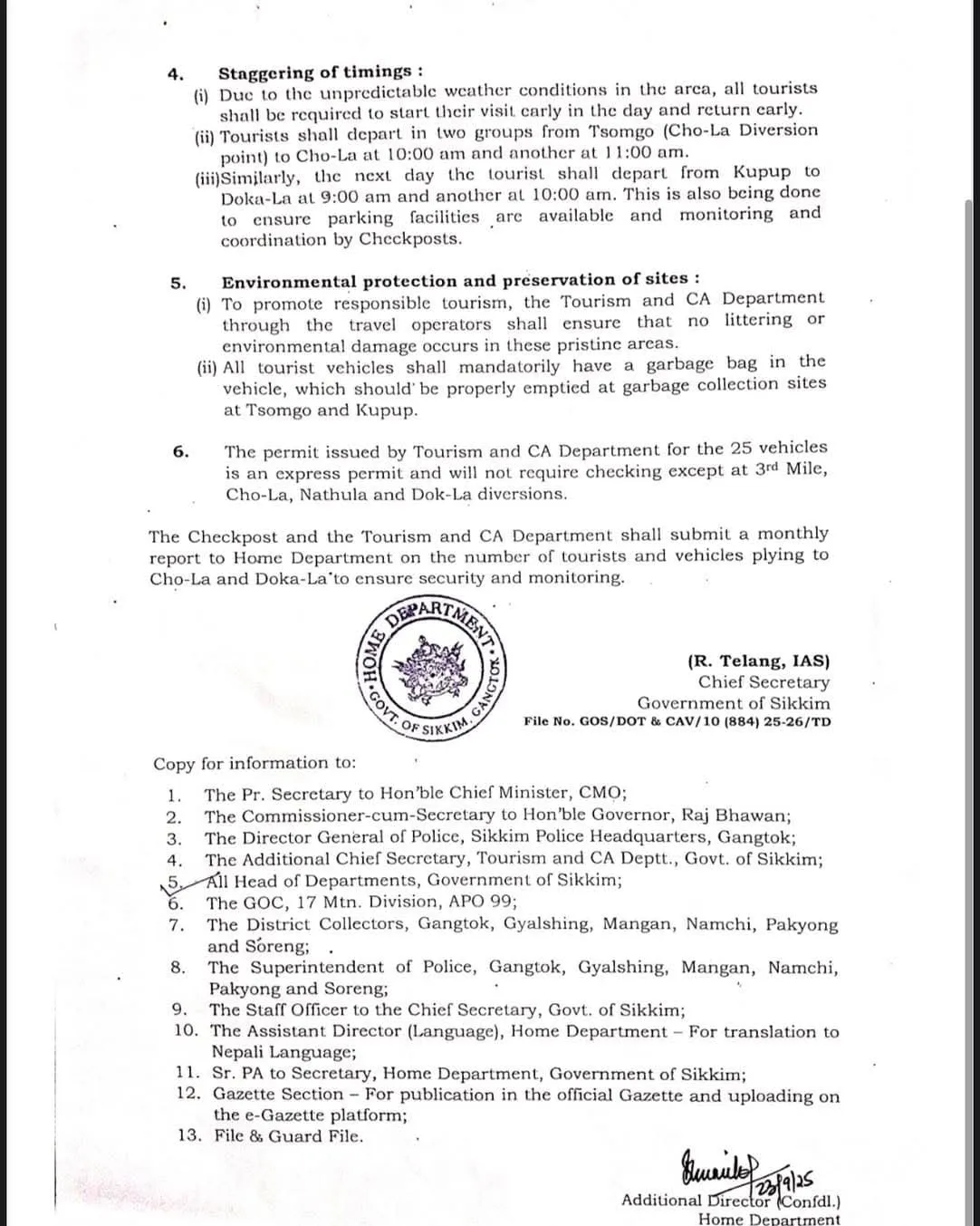
How to Reach Doklam?
Being a sensitive military zone, civilian travel to Doklam is restricted. However, the closest access points lie through Sikkim.
By Air: The nearest airport is Bagdogra Airport (West Bengal), about 170 km from Gangtok, Sikkim’s capital.
By Rail: The closest railway station is New Jalpaiguri (NJP), around 160 km from Gangtok.
By Road: From Gangtok, travelers can proceed to Nathu La Pass, about 55 km away. The Doklam plateau lies further east of this region, but entry is restricted and monitored by the Indian Army and Bhutanese authorities.
For tourists, Nathula and surrounding high-altitude lakes (like Tsomgo Lake) offer glimpses of the region’s terrain without venturing into the restricted zone.
Where to stay overnight when visiting Doklam?
Since the journey from Gangtok to Doklam is quite long and can be physically demanding, travelers are advised to consider an overnight halt at Dzuluk. This quaint mountain hamlet, located on the historic Old Silk Route, not only breaks the journey but also offers spectacular sunrise views over the Eastern Himalayas, including the Kanchenjunga range on clear mornings.
Staying in Zuluk also helps acclimatize better to the changing altitude and weather conditions after visiting Doklam. Several cozy homestays and guesthouses are available, providing both comfort and a chance to experience warm local hospitality.
Weather and Terrain
Summer (May–September): Temperatures range between 5°C and 15°C, with clear skies but occasional rain.
Winter (October–April): Harsh conditions dominate, with sub-zero temperatures, heavy snowfall, and strong winds.
The high-altitude plateau is often shrouded in mist, adding to its mystique but also making navigation difficult.
Flora and Fauna
Despite its harsh environment, Doklam supports a variety of alpine vegetation—mosses, lichens, dwarf rhododendrons, and hardy grasses. Wildlife includes species adapted to the cold, such as the Himalayan blue sheep, Tibetan wolf, snow leopard (rare), and migratory birds like the Himalayan monal. Its ecological value complements its strategic position.
A Rare Recce Experience : My Personal Visit to Doklam
During an official recce visit to Doklam earlier this year, I had the rare opportunity to witness the area before it was officially opened to the wider public. Walking across the high-altitude meadows and grasslands with panoramic views of Bhutan and Tibet on the horizon was both surreal and humbling. The silence was broken only by the sound of the wind and distant calls of Himalayan birds. We stopped by a crystal clear brook fed by the glacial meltwaters, gurgling on its way down before vanishing underneath a bend in the road. The place by the side of the road was so fantastical with bright pink wildflowers, ferns and other high altitude flowering plants growing all along like nature’s garden - perfectly wild and untamed.
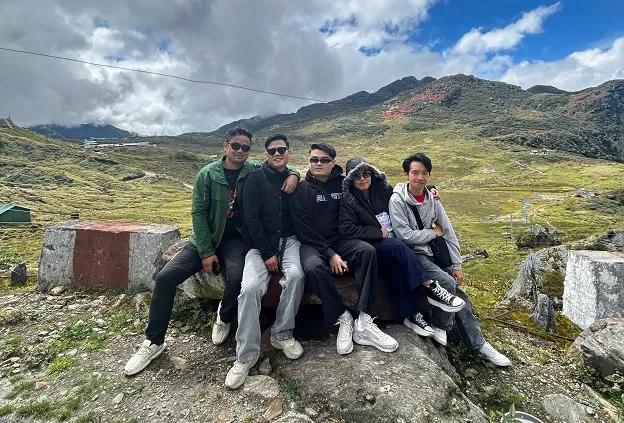
The weather in Doklam shifts dramatically within just a few kilometers. One moment you’re under clear blue skies, and the next you’re surrounded by dull, grey clouds, light drizzle, or dense mist with near-zero visibility. It’s a place where you can experience the full spectrum of weather in a single journey
This first-hand experience underscored why the region is not only geopolitically important but also a natural treasure worth preserving. With the new battlefield tourism initiative, visitors will soon be able to explore this incredible landscape in a structured and sustainable way. There were several army check points and one thing we realised was that security in these high passes was very tight. It is important to note that there is no network coverage in these areas and even the time zones keep swapping between India time and China time on your cellphones !
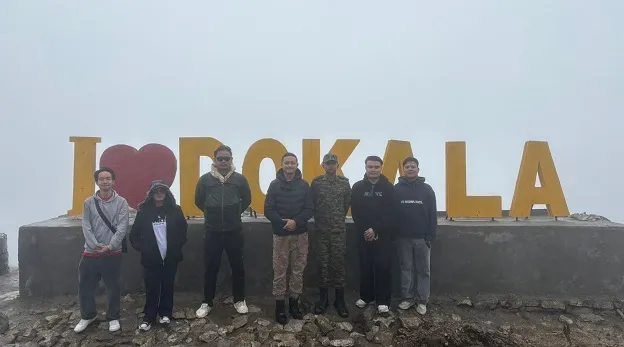
Doklam and Battlefield Tourism in Sikkim
In a landmark move, the Sikkim government has announced that Doklam and Cho La battlegrounds will be opened for domestic tourists starting September 27, 2025. This decision, part of a broader battlefield tourism initiative, aims to combine history, culture, and natural beauty into a unique travel offering.
Key Details:
Opening Date: September 27, 2025
Access: Only domestic tourists will be allowed initially.
Vehicle Limit: To ensure safety and protect the fragile Himalayan environment, only 25 vehicles per day will be permitted at these sensitive sites.
Infrastructure: Facilities have been developed in coordination with the Indian Army and Border Roads Organisation (BRO) to accommodate visitors safely. There is an Army Cafteria, which will open soon where travellers can get some light snacks, etc. There will also be a public restroom at the cafeteria.
Significance: Besides its breathtaking landscape, Doklam carries historical and strategic weight as the site of the 2017 India–China standoff.
This move is expected to:
Boost Tourism: Introduce a new dimension to Sikkim’s offerings.
Support Local Economy: Create opportunities for guides, homestays, and transport operators.
Showcase Heritage: Allow travelers to experience the history of Indo-China conflicts alongside Sikkim’s serene Himalayan backdrop.
Conclusion
Doklam remains one of the most talked-about regions in the Himalayas. Its breathtaking landscape, extreme climate, and ecological diversity contrast with the high-stakes geopolitical chessboard it represents. To understand Doklam is to glimpse the intersection of nature, culture, and strategy in the heart of Asia’s high mountains.
With the upcoming opening of Doklam and Cho La to domestic travelers, the plateau is poised to transform from a military flashpoint into a historical learning hub. Battlefield tourism here not only offers visitors a chance to appreciate the region’s scenic beauty but also provides a first-hand glimpse into the challenges of guarding the Himalayas. By balancing strict vehicle caps with new infrastructure, Sikkim is blending conservation, education, and tourism into a groundbreaking initiative that redefines how travelers engage with history
FAQs on Doklam Battlefield Tourism
1. When will Doklam open for tourists?
Doklam and Cho La battlegrounds will officially open to domestic tourists from 1st October, 2025 under Sikkim’s new battlefield tourism initiative.
2. Who can visit Doklam?
Currently, only domestic Indian tourists with a valid Voter ID are allowed. Entry for foreign visitors is restricted due to the sensitive geopolitical location.
3. How many vehicles are allowed daily?
To ensure safety and protect the fragile Himalayan ecosystem, the Sikkim government has capped entry at 25 vehicles and 25 bikers per day for Doka-La and Cho-La each. Vehicles must have an engine capacity of 1400 cc or above.
4. Are private vehicles allowed?
No. Only vehicles owned and operated by registered travel operators are permitted. Self Driven Cars are currently not allowed.
5. How do I get a permit for Doklam?
Permits are issued by the Tourism & Civil Aviation Department through registered tour operators/travel agencies only like OurGuest.
You must show proof of a one-night stay booking at designated Silk Route areas (Kupup, Gnathang, Zuluk, or Padamchen).
6. What is the permit fee?
₹1120 per person (includes Wildlife Sanctuary fee & Tsomgo Pokhari Sangrakshan Samiti fee).
7. How can I reach Doklam?
Doklam can be accessed via Sikkim, starting from Gangtok or nearby towns. Tourists need to apply for special permits, with travel organized in coordination with the Indian Army and Border Roads Organisation (BRO).
8. What are the travel timings?
To Cho-La: Depart from Tsomgo at 10:00 am or 11:00 am.
To Doka-La: Depart from Kupup at 9:00 am or 10:00 am.
9. What is the best time to visit Doklam?
With high altitude weather conditions, the best time to visit is April–June and September–November, when the skies are clear. Monsoon months (July–August) are risky due to landslides, while winters (December–February) bring heavy snow.
10. What other places are included in battlefield tourism in Sikkim?
Besides Doklam, the initiative also includes Cho La and Nathula Pass, all of which hold major historical and military importance.
11. What facilities are available for tourists?
The Sikkim government, BRO, and Indian Army have set up basic infrastructure for safe travel. Facilities include improved roads, viewing areas, and limited visitor amenities.
Written by Prerna
Prerna, a seasoned travel & hospitality expert, isn't just a writer – she's a curator of experiences. Leading OurGuest's operations at The Barfung Retreat, she leverages her extensive background at Taj, Hyatt, ITC, and more. A Master's graduate in English Literature, Prerna's passion for storytelling is fueled by her childhood spent traversing India with her police officer father. Fluent in Bengali, Hindi, English, and Nepali, she fosters genuine connections across cultures. Join Prerna as she unveils the hidden gems and vibrant soul of Northeast India, one captivating story at a time.
For a customized Doklam Silk Route Sikkim Tour experience you can contact us at +91-7669503993 or email to contact@ourguest.in




